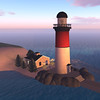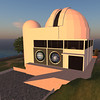Educational Fields In Second Life
Educators in all fields can find an efficient way to use SL in their teaching. Below are some examples of educational domains in SL.
Arts
Teachers of fine arts and multimedia design (Cargill-Kipar, 2009) can have their students create three-dimensional shapes.
History and archaeology
History and archaeology teachers can benefit from 3D feature in SL to create real world experience for their students. Learners can immerse themselves in ancient worlds through different images and textures of ancient people cultural. They can wear ancient cloths, dance with ancient music, and play the role of ancient characteristics.
Science
Teachers of physics, geography, and astronomy can apply what is impossible in real world, like flying and building entire cities in the air. SL empowers students’ imaginations without any boundaries (Arete2, 2007).
Psychology
Psychological educators and students found SL an excellent environment to examine humans’ behavior. In real world, it is difficult to eliminate and control all variables that might affect the result of an experiment. However, within SL it is easy to build the exact environment and control almost all variables (Baker, Wentz & Woods, 2009).
http://www.youtube.com/watch?v=pNUe9G14Jwo&feature=relatedIn fact, psychological researchers in SL deducted that humans’ behavior in SL and in real life are similar, which provides authenticity and validity for psychological results in SL (Baker, Wentz & Woods, 2009).
Furthermore, SL attracts educators and students of architecture, engineering, and interior design (Arete2, 2007).






Leave a Reply